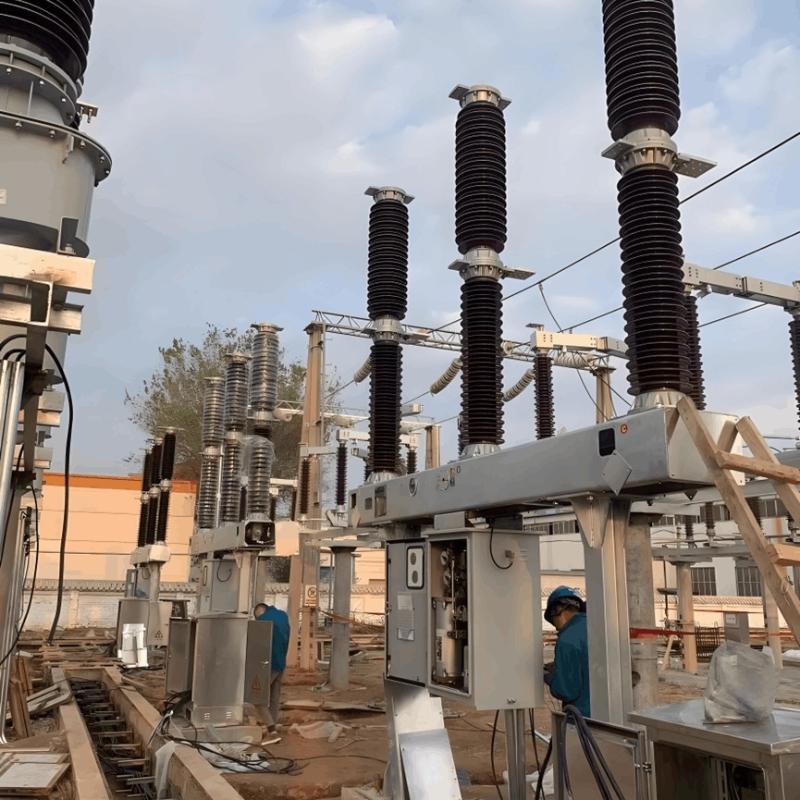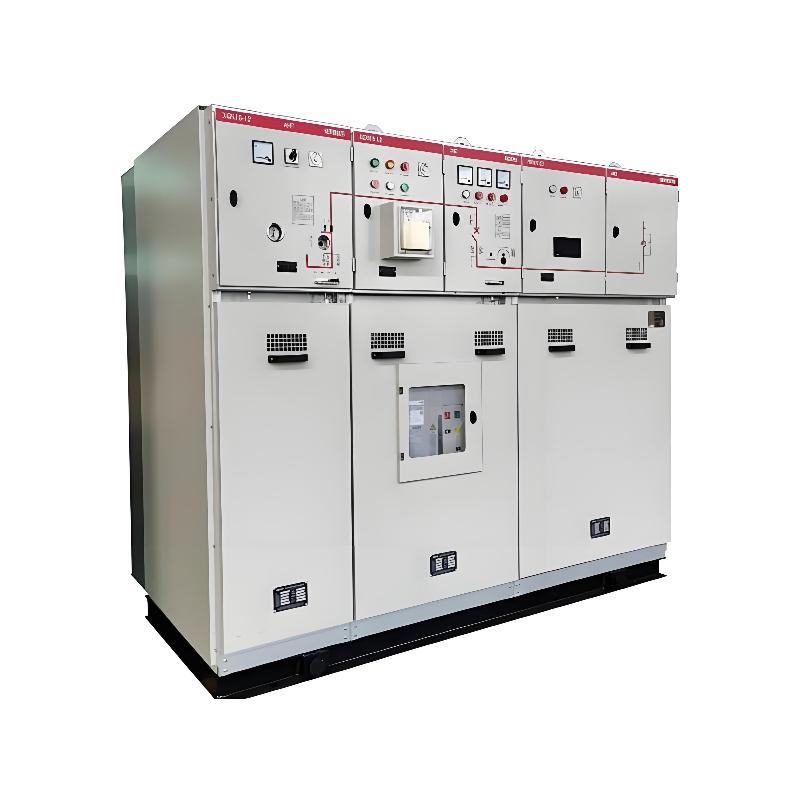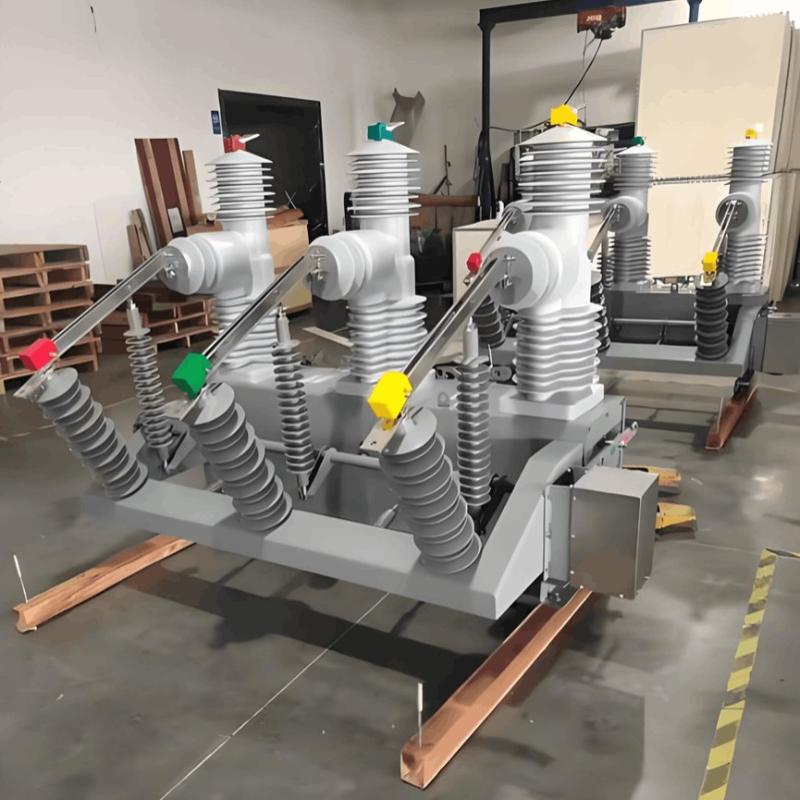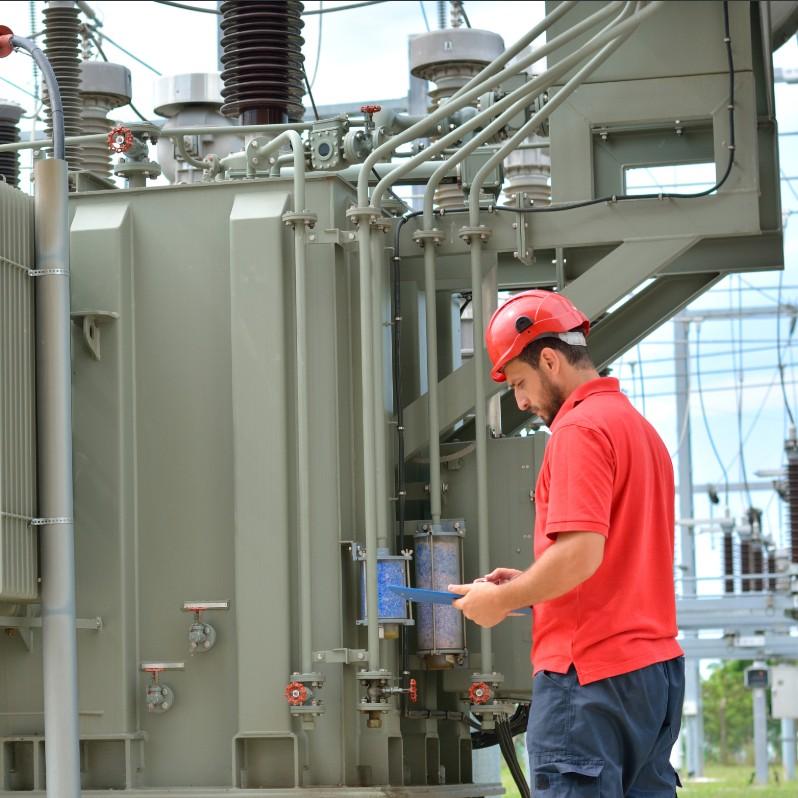1. Klasipikasyon sa Struktura sa mga Sistema sa Automatikong Substation
1.1 Struktura sa Distribyidong Sistema
Ang struktura sa distribyidong sistema mao ang teknikal nga arkitektura nga naghimo og koleksyon ug kontrol sa datos pinaagi sa kolaboratibong pagtrabaho sa daghang de-sentralisadong mga device ug mga yunit sa kontrol. Kini nga sistema gisangpotan sa daghang functional nga mga modulyo, kasama na ang mga yunit sa monitoring ug pag-store sa datos. Kini nga mga modulyo gigikanan sa usa ka reliable nga communication network ug nahitabo ang mga operasyon sa automatikong substation sumala sa preset nga kontrol logic ug strategies.
Sa usa ka distribyidong struktura, kada yunit adunay independiente nga processing power ug decision-making functions, makapahimo og automatikong kontrol ug fault diagnosis sa lokal nga area.
Samtang, kini nga mga yunit mahimo mog-upload sa datos ngadto sa usa ka centralized nga kontrol system sa real-time, ug ang substation mahimo mog-central management pinaagi sa usa ka remote monitoring platform. Kon ihulagyo sa tradisyonal nga centralized nga kontrol systems, ang mga distribyidong systems adunay mas taas nga flexibility ug redundancy, nga makaepektibo nga iwasan ang impakto sa single-point failures ug mapataas ang stability ug reliability sa sistema. Ang struktura sa distribyidong sistema makakapot sa mas komplikado nga automation functions, makapahimo og flexible nga response sa kompleksong power grid environments ug sigurado ang safety ug stability sa power supply.
1.2 Struktura sa Centralized nga Sistema
Ang struktura sa centralized nga sistema nagpadako sa usa ka central nga kontrol unit isip core ug nag-manage ug koordinar sa operasyon sa daghang devices sa substation pinaagi sa centralized nga data processing ug kontrol functions. Kini nga struktura gisangpotan sa usa ka central nga kontrol system ug intelligent electronic devices. Ang central nga kontrol system responsable sa pagtanggap ug pagproseso sa datos gikan sa daghang devices, ug ipaangay sa mga komando sumala sa kontrol strategies aron mapahimulos ang unified nga kontrol ug management sa daghang substation equipment.
Sa usa ka centralized nga sistema, tanang monitoring ug kontrol functions gitipon sa central nga kontrol unit, ug ang daghang devices sa substation gibutang pinaagi sa usa ka high-speed nga communication network. Bisag maoy may taas nga unity ug convenience sa sistema management ug maintenance, tungod kay tanang kontrol ug decision-making processes gi-depende sa usa ka single central nga kontrol system, kon magfail ang central nga sistema, mahimo ang mobati sa control o interruption sa operasyon sa buhatan nga substation, busa nakakaapekto sa safety ug reliability sa power system.
1.3 Hierarchical nga Struktura sa Sistema
Ang hierarchical nga struktura sa sistema mao ang arkitektura nga gitibuok ang sistema functions sa daghang layers, diin kada layer independentemente responsable sa specific nga mga task. Kini nga struktura tipikal nga gisangpotan sa apat ka main levels: ang field layer, kontrol layer, monitoring layer, ug management layer. Ang data exchange ug kontrol coordination gibutang tali kada layer pinaagi sa usa ka high-speed nga communication network.Ang field layer ania sa dili pa sa sistema ug gisangpotan sa intelligent devices ug relay protection devices sa substation. Ang field layer responsable sa basic nga operasyon sama sa pag-collect sa electrical parameters, monitoring sa status sa equipment, ug pag-implement sa lokal nga automatikong kontrol.
Ang kontrol layer ania tali sa field layer ug monitoring layer ug gisangpotan sa remote terminal units ug programmable logic controllers. Ang kontrol layer responsable sa pagkuha sa data gikan sa field layer ug kontrol sa field equipment sumala sa kontrol logic ug operation strategies, bisan unsa mopahimulos ang automated nga scheduling sa equipment sa substation.Ang monitoring layer ania sa upper-middle part sa sistema ug tipikal nga gisangpotan sa supervisory control and data acquisition (SCADA) system. Ang monitoring layer responsable sa centralized nga pagproseso ug pag-store sa data gikan sa kontrol layer ug field layer, monitoring sa real-time sa operasyon status sa substation, ug paghandog sa mga function sama sa alarms ug equipment management.
Ang management layer ania sa top sa sistema ug responsable sa comprehensive nga management ug decision-making support sa substation. Ang management layer naghandog sa mga function sama sa overall nga monitoring ug maintenance management sa power system aron sigurado ang coordinated nga operasyon sa substation sa buhatan nga power grid.

2. Common nga Mga Faults sa Substation Automation Systems
2.1 Communication Network Faults
Ang communication network sa substation automation system naglupot og crucial nga papel sa modern nga power systems, responsable sa paghimo og real-time nga data transmission ug information sharing tali sa daghang devices. Apan, ang communication network faults mahimo mog-serious nga epekto sa automatikong kontrol ug remote monitoring sa substations, mosunod sa unstable nga operasyon sa power system.
Ang communication equipment mahimo mog-fail tungod sa aging o quality issues. Ang hardware damage sa switches o routers mahimo mog-hindang sa normal nga forwarding sa datos, ug ang disconnection sa transmission lines mahimo mog-lead sa communication interruption. Ang power supply problems usab importante nga cause sa hardware failures. Ang unstable nga power supply mahimo mog-hindang sa communication equipment sa proper nga operasyon.
Sa communication network sa substations, ang electromagnetic interference generated during equipment operation mahimo mog-epekto sa quality sa communication signals, espesyalmente para sa low-frequency signals o wireless communication. Ang strong nga electric ug magnetic fields generated sa high-voltage equipment sa power system mahimo mog-cause sa signal attenuation o distortion, affecting the reliability of data transmission. Signal attenuation in long-distance transmission lines is also a common problem, especially when using cable communication. The signal gradually weakens during transmission, which may prevent the receiving end from accurately receiving data.
2.2 Data Acquisition Faults
Data acquisition in the substation automation system is the basis for realizing remote monitoring and dispatching management. The data acquisition system is responsible for obtaining real-time data from various devices in the substation and transmitting it to the central control system or SCADA system. If data acquisition fails, it may affect the normal operation of the substation and even endanger the safety of the power system.
The data acquisition system relies on a large number of hardware devices. If these devices fail, data acquisition cannot proceed normally. Sensor damage or aging may lead to inaccurate measurement of key parameters such as current or temperature. Power failures of remote terminal units (RTUs) or intelligent electronic devices (IEDs) may prevent the devices from starting or cause them to stop working, thereby affecting data transmission and acquisition.
Data acquisition depends on a stable communication network to transmit data from field devices to the central control system. If the communication network fails, such as signal loss or data transmission delay, it will lead to the failure of data acquisition. Problems such as damaged communication lines, faulty network switching equipment, or protocol incompatibility will directly affect the reliability and real-time nature of data transmission.
If the devices in the data acquisition system are not properly configured or calibrated, the collected data may be inaccurate or lost. If the devices are not configured with parameters according to specifications during installation or are not regularly calibrated later, it is also easy to cause data acquisition errors. The normal operation of the data acquisition system depends on the support of the corresponding software platform or program. If there are loopholes in the software or version incompatibility, data acquisition may not be executed normally.
2.3 False Alarm Faults
In the daily operation of the substation automation system, it can monitor the status of power equipment in real-time and issue alarm signals so that corresponding measures can be taken in a timely manner. However, false alarms are one of the common fault types in automation systems. False alarms may not only affect the normal operation of staff but also lead to waste of resources and unnecessary interference. In severe cases, they may even lead to inappropriate emergency responses.
The alarm function of the substation automation system usually depends on set thresholds. If these thresholds are set too sensitively or do not conform to actual operating conditions, frequent false alarms may occur. Large voltage fluctuations or transient changes in equipment under certain operating conditions may be mistaken for faults, triggering alarms. Therefore, reasonable threshold setting is crucial for avoiding false alarms.
Operational errors by operators are also a common cause of false alarms. During system configuration or equipment debugging, errors by operators may lead to unreasonable alarm conditions or trigger false alarms. If operators do not configure the system according to standard operating procedures or do not recalibrate alarm parameters when replacing equipment, the equipment status may not match the alarm conditions, resulting in false alarms.

3. Measures for Handling Common Faults in Substation Automation Systems
3.1 Improving the Hardware Equipment Management System
Establishing a sound equipment management system is a prerequisite for preventing hardware failures. Substations should formulate detailed management specifications for the entire life cycle of equipment, including procurement and maintenance, to ensure that each piece of equipment undergoes strict quality inspection and acceptance before installation and meets technical requirements when put into use. At the same time, for different types of equipment, special maintenance cycles and inspection standards should be set, with regular inspections and updates to extend the service life of equipment and reduce failures caused by equipment aging or damage.
Secondly, substations should strengthen the monitoring and recording of equipment during operation. Through real-time monitoring of equipment, potential fault hazards can be detected in a timely manner. Use an online monitoring system to continuously monitor the operation status and key parameters such as current of substation automation equipment and transmit the data to the central monitoring system. On this basis, conduct regular fault diagnosis, record detailed data of equipment operation, form historical files, so as to conduct fault prediction and analysis, effectively identify abnormal changes in equipment, and take preventive measures to prevent failures.
3.2 Regular maintenance and servicing work
Regular maintenance work should include the maintenance of the software system of the automation system. The core part of the automation system is the computer monitoring system and control software. The stability of their operation directly affects the automation level and fault diagnosis capability of the substation. Regularly maintain the software system, including updating and optimizing the operating system and control algorithms, to ensure that the software does not experience "failure" or "crash" when handling complex operations.Regular backup work is also crucial, as it can prevent system downtime due to program damage or data loss. Therefore, regular system backups and data recovery drills are part of the maintenance work.
3.3 Implementing the Elimination Method
Implementing the elimination method requires clearly defining the fault symptoms and making detailed records. Operators should quickly identify the manifestation of the fault based on system alarms and equipment performance, and understand the basic situation of the fault. If the system experiences data loss or transmission delay, operators should first check the communication links of all parts of the system to ensure that the data transmission channel is not interrupted. Through careful observation, some obvious fault causes can be excluded, ensuring that subsequent fault troubleshooting is more targeted.
The implementation of the elimination method needs to follow certain steps. Take data acquisition faults in the substation automation system as an example. First, check the acquisition equipment itself, such as sensors and transformers, to confirm the operation status of these devices. If the acquisition equipment is okay, further check the communication connections and data transmission protocols between devices. If the communication equipment and network connections are normal, then check whether the software settings of the automation system are correct, and whether there are abnormal configurations or program errors. Finally, through step-by-step elimination, the fault source is ultimately determined. This method effectively narrows the scope of troubleshooting, avoiding blind inspection and waste of resources.
4. Conclusion
In summary, the substation automation system involves a large number of devices and technologies, with a wide variety of system faults, and high complexity in fault location and handling. At the same time, during the operation of the substation automation system, some devices may fail due to factors such as aging and changes in the external environment. If these faults are not handled in a timely manner, it may lead to equipment damage and reduced system operation efficiency, thus increasing maintenance and repair costs. Therefore, measures such as improving the hardware equipment management system, conducting regular maintenance work, and implementing the elimination method are needed to improve the ability of fault detection and prevention.























